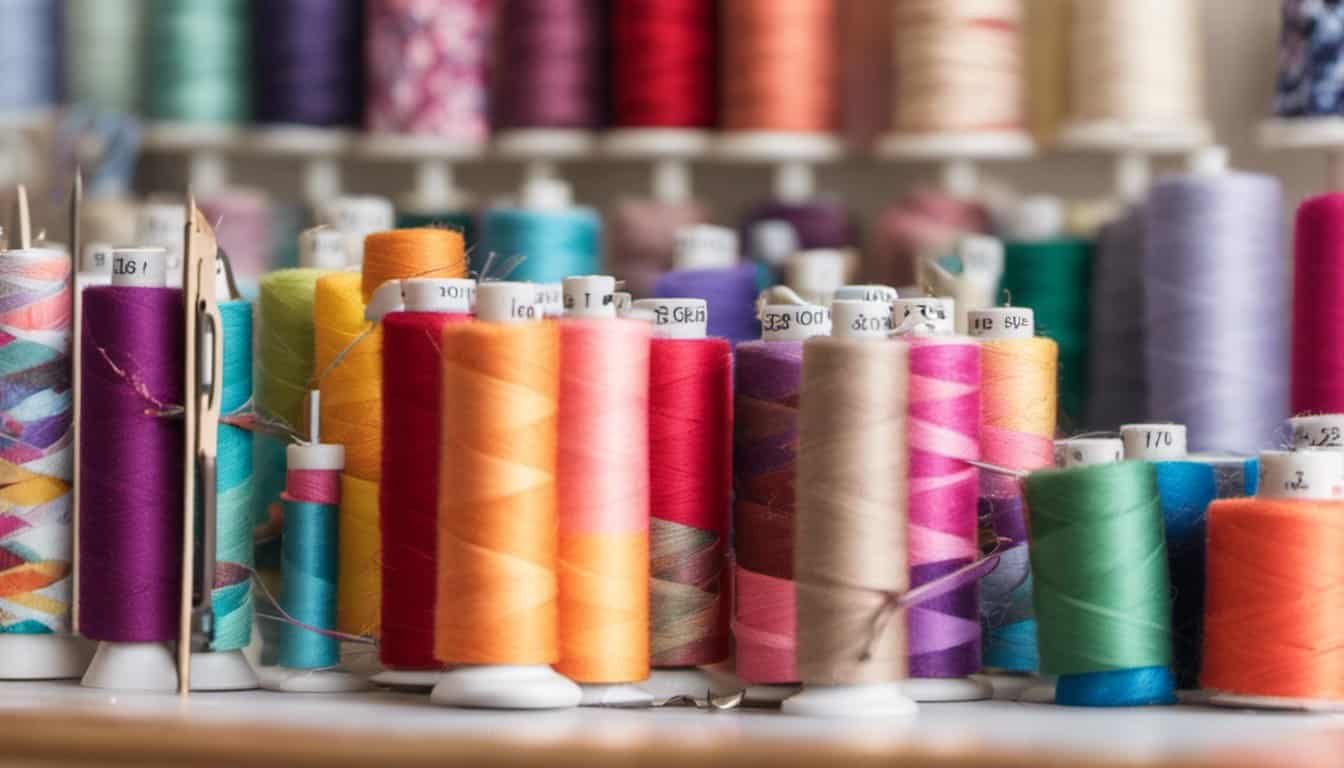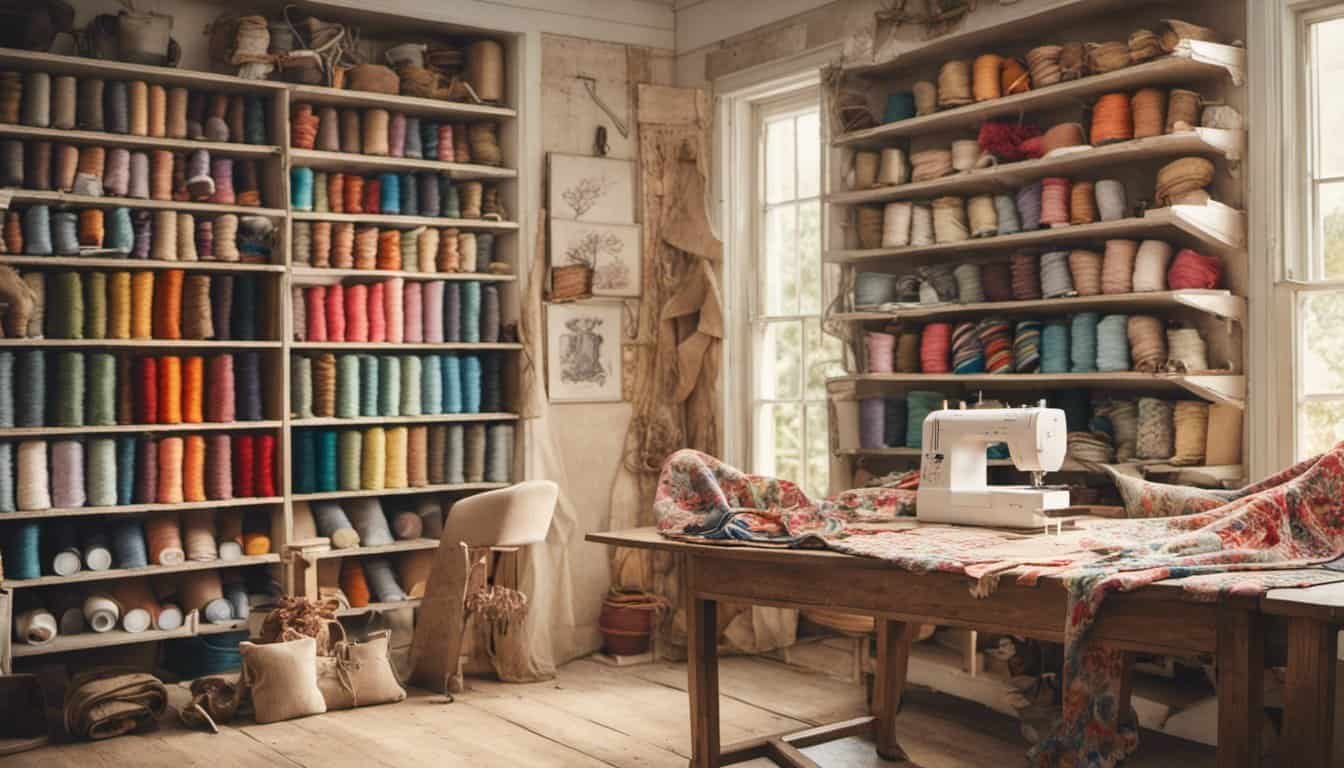Sewing a flat felled seam might seem daunting at first, but once you get the hang of it, you’ll love the durability and clean finish it brings to your projects. I’ve always appreciated how this technique strengthens seams, making garments and crafts last longer.
Understanding Flat Felled Seams
A flat felled seam is a robust sewing technique that encloses raw edges within the seam, ensuring durability and a polished appearance. This method involves folding the fabric edges under and stitching them down, which secures the seam and prevents fraying.
Flat felled seams enhance the longevity of garments by distributing stress evenly across the seam line. They are commonly used in denim jeans, shirts, and outerwear where strength is essential. Additionally, this seam type provides a clean finish, making it suitable for both functional and visible seams in high-quality crafts.
Key benefits of flat felled seams include:
- Durability: Resistant to wear and tear, ideal for frequently used items.
- Clean Finish: Offers a smooth, professional look without exposed edges.
- Strength: Reinforced stitching withstands repeated washing and use.
By incorporating flat felled seams, garments achieve both functionality and aesthetics, contributing to their overall quality and lifespan.
Materials and Tools Needed
To sew a flat felled seam, gather the following materials and tools:
Materials
- Fabric: Opt for sturdy materials like denim, cotton, or canvas to ensure durability.
- Thread: Use polyester or cotton thread matching your fabric color. A 40-weight thread provides strength.
- Interfacing (optional): Adds extra support for heavy fabrics, enhancing seam stability.
Tools
- Sewing Machine: A dependable machine capable of handling thick fabrics is essential.
- Needles: Universal or denim needles in size 90/14 or 100/16 work best for strong seams.
- Pins or Clips: Topstitch clips hold fabric layers securely without damaging the material.
- Measuring Tape or Ruler: Accurate measurements ensure precise seam placement.
- Iron and Ironing Board: Pressing fabric layers creates crisp, neat seams.
- Seam Ripper: Quickly corrects any stitching errors without damaging the fabric.
- Marking Tools: Tailor’s chalk or fabric pens mark seam allowances clearly.
Having these materials and tools ready sets the foundation for sewing durable and professional flat felled seams.
Step-by-Step Guide
Follow these steps to sew a durable flat felled seam with precision and confidence.
Preparing the Fabric
Begin by cutting your fabric to the desired dimensions, ensuring both edges are straight. Use a 5/8-inch seam allowance, a standard for flat felled seams. Press the fabric edges with an iron to create crisp lines, which facilitates accurate stitching. Align the right sides of the fabric together, and secure them with pins or clips to maintain consistency throughout the sewing process.
Sewing the First Side
Start by sewing along one edge of the fabric using a straight stitch. Maintain a consistent seam allowance to ensure uniformity. Backstitch at the beginning and end to secure the stitches and prevent unraveling. After sewing, press the seam allowance to one side, typically the right side, to prepare for folding.
Sewing the Second Side
Fold the pressed seam allowance over the sewn edge, enclosing the raw edge completely. Pin the folded edge in place to keep it aligned. Sew along the folded edge with a straight stitch, close to the fold, ensuring the seam is flat and durable. This second stitching step reinforces the seam, enhancing its strength and longevity.
Finishing the Seam
Turn the fabric right side out and press the seam flat for a professional finish. Inspect the seam for any loose threads or inconsistencies, trimming excess if necessary. Repeat the process on all required seams to ensure uniform durability across your project. Properly finished flat felled seams contribute to the garment’s overall quality and durability.
Tips for Enhanced Durability
Choosing the right fabric ensures your flat felled seams stand up to stress. I select sturdy materials like denim, cotton, or canvas for optimal strength. Matching thread quality prevents seam failures, so I opt for polyester or strong cotton threads that complement the fabric color.
Maintaining accurate seam allowances boosts durability. I consistently measure a 5/8-inch seam allowance to distribute stress evenly across the seam. Reinforcing stitches adds extra strength, so I backstitch at the beginning and end of each seam to secure the stitches firmly.

Proper pressing techniques enhance seam longevity. I press each fold with a hot iron after sewing to set the stitches and prevent fabric movement. Additionally, trimming excess fabric reduces bulk, minimizing strain on the seams during wear and washing.
Using the appropriate needles improves seam integrity. I choose sharp needles for woven fabrics and heavy-duty needles for thicker materials, ensuring clean penetration without damaging the fabric. Regularly changing needles prevents breakage and maintains consistent stitching quality.
Implementing consistent tension settings on my sewing machine enhances seam strength. I adjust the tension based on fabric thickness, ensuring balanced stitches that hold the seam securely. Testing on scrap fabric helps achieve the optimal tension before sewing the actual project.
| Tip | Description |
|---|---|
| Choose Sturdy Fabrics | Select denim, cotton, or canvas for robust seams. |
| Use Quality Thread | Opt for polyester or strong cotton threads matching fabric color. |
| Maintain Seam Allowance | Measure a consistent 5/8-inch seam allowance for even stress distribution. |
| Reinforce Stitches | Backstitch at seam ends to secure stitches firmly. |
| Proper Pressing | Press folds with a hot iron to set stitches and prevent fabric movement. |
| Trim Excess Fabric | Reduce bulk by trimming excess fabric, minimizing seam strain. |
| Select Appropriate Needles | Use sharp needles for woven fabrics and heavy-duty needles for thick materials. |
| Adjust Tension Settings | Balance machine tension based on fabric thickness for secure stitching. |
Implementing these tips ensures your flat felled seams achieve maximum durability, enhancing the longevity and quality of your garments and crafts.
Common Mistakes to Avoid
- Inconsistent Seam Allowances
Maintaining a uniform 5/8-inch seam is essential; inconsistent seams weaken durability.
- Improper Pressing
« Unlock Expert Tips on How to Sew a Reinforced Seam for Heavy Fabrics Today
Pressing seams incorrectly results in a bulky finish, making the garment less professional.
- Wrong Thread Choice
Using low-quality or mismatched threads causes seams to fray and fail under stress.
- Incorrect Fabric Cutting
Cutting fabric unevenly leads to misaligned seams, reducing the overall strength.
- Skipping Reinforcement
Neglecting backstitching weakens the seam, making it prone to tearing during use.
- Neglecting Trimming Excess Fabric
Leaving excess fabric untrimmed adds bulk and prevents the seam from lying flat.

- Incorrect Needle Selection
Choosing the wrong needle type damages fabric edges, compromising seam integrity.
- Inadequate Sewing Machine Tension
Improper tension settings cause puckering or loose stitches, affecting seam strength.
- Forgetting to Fold Seam Allowances Properly
Failing to fold seam allowances correctly exposes raw edges, reducing durability.
- Rushing the Sewing Process
Moving too quickly leads to uneven stitching and poorly finished seams.
Conclusion
Working with flat felled seams has truly transformed my sewing projects. The strength and clean finish they provide make all the difference in the longevity of my garments. It’s satisfying to see how these seams not only enhance durability but also add a professional touch to my work.

Taking the time to master this technique pays off with each piece I create. I hope you feel inspired to incorporate flat felled seams into your sewing projects. You’ll find that the effort leads to beautiful and lasting results that you can be proud of.












